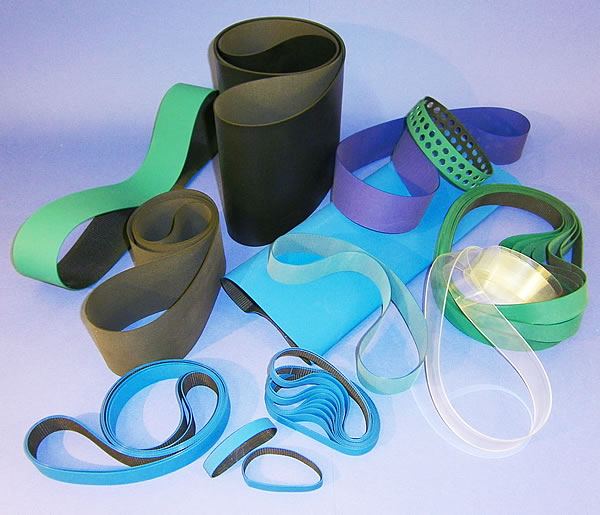We have developed a method for material characterization and relaxation testing. We have tested materials from our range, from our partners, from our colleagues as well as other polyurethanes in order to choose the most interesting materials according to technical criteria (adhesion, abrasion resistance,...), durability (resistance to relaxation over time), stability (at temperature, humidity) and price.
Thanks to our experience in the field of elastic belts (partnership with several major manufacturers for more than 20 years) and now really mastering the relaxation and aging of our materials, we can offer you the solution best suited to your application while ensuring an optimal quality/price ratio.
Since 2012, we have been developing our own polyurethane, which is particularly effective in relaxation and abrasion, for the production of endless elastic belts and belt coverings.
Chemical properties of PU and TPE
General
Thermoplastic materials can be used in various applications that interact with various chemicals.
Chemical resistance depends on exposure time, temperature, amount, concentration and type of chemical. Therefore, it is difficult to make a clear distinction between the effects described below in all cases. In the event of chemical degradation of polyurethane, the chemical reaction causes the breakdown of the molecular chain. As it degrades, polyurethane loses its strength and in extreme cases this can lead to parts breaking down.
For critical applications, it is recommended to perform a detailed stress test taking into account both swelling and impact on mechanical properties.
Swelling
Swelling is the basic physical process of absorbing liquid substances from solids. During this process, substances enter the material without chemical interaction.
This leads to an increase in volume and weight, and a corresponding decrease in mechanical values. After evaporation, expansion is reduced and the original performance of the product is almost completely restored.
Swelling is a reversible process. By using reinforcing materials (such as polyester or aramid threads) made of polyurethane, you can almost avoid this mechanical effect on the material.
Hydrolysis resistance
If the polyester-based polyurethane is exposed to hot water, humid steam or tropical climate for a long time, the polyester chain will be irreversibly broken due to hydrolysis. This leads to a decrease in mechanical properties. This effect is more pronounced in the flexible grades, where the polyester content is proportionately higher than in the harder formulations.
However, denaturation of polyester-based polyurethanes rarely occurs at room temperature. Due to its chemical structure, polyester-based polyurethanes have better resistance to hydrolytic degradation.
Microbiological resistance
When using polyester-based thermoplastic polyurethane in climatic conditions of high temperature and humidity, the parts can be damaged by microbial attack. In particular, enzyme-producing microorganisms affect the molecular chain of polyester-based TPU.
Initially, the microbial attack is visible in the form of discoloration.
Subsequently, cracks appear on the surface, allowing microorganisms to penetrate more deeply and cause complete destruction of the TPU.

